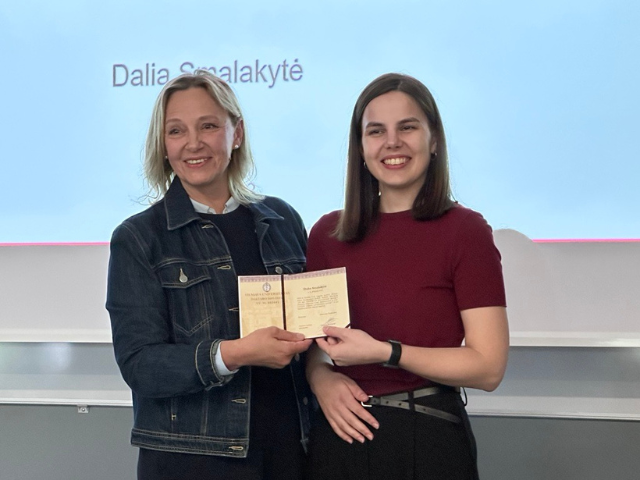Dalia Smalakytė has defended her thesis entitled "Insights into type III CRISPR-Cas immunity: mechanisms of Csm6 deactivation and a comprehensive characterization of the Lon-SAVED effector" for the degree of Doctor of Science in Biochemistry.
Scientific consultant: Dr. Gintautas Tamulaitis (Vilnius University, Natural Sciences, Biochemistry).
Composition of the Dissertation Defense Board: Chairperson - Prof. Dr. Edita Sužiedėlienė (Vilnius University, Natural Sciences, Biochemistry); Prof. Dr. Rolandas Meškys (Vilnius University, Natural Sciences, Biochemistry); Dr. Patrick Pausch (Vilnius University, Natural Sciences, Biochemistry); Dr. Constantinos Patinios (Vilnius University, Natural Sciences, Biochemistry); Dr. Raymond Staals (Wageningen University, The Netherlands, Natural Sciences, Biochemistry).
Mechanisms of Adaptive Immune Response in CRISPR-Cas Systems that Protect Prokaryotes from Invading Viruses. These systems detect and neutralize foreign genetic material. Among the various CRISPR-Cas systems, Type III systems are unique in that, in addition to viral RNA hydrolysis, they can synthesize cyclic oligoadenylates (cAn)—signaling molecules that activate auxiliary effector proteins. This dissertation examines two effectors: the ribonuclease Csm6 and the CalpL protein, which is part of the ternary CalpL-CalpT-CalpS effector complex. CalpL consists of Lon and SAVED domains. In the Csm6 protein, binding of the cA6 molecule to the CARF domain activates the ribonucleolytic activity of the HEPN domain. Metabolite analysis of the cell and biochemical studies of the Csm6 protein revealed that Csm6 degrades its activator cA6, thereby creating a self-regulation mechanism that limits its duration of action. In the case of the ternary CalpL-CalpT-CalpS effector, binding of the signaling molecule cA4 activates the CalpL protein, which cleaves the anti-σ factor CalpT, marking it for further proteolysis, which in turn releases the σ factor CalpS. CalpL also limits its activity by hydrolyzing its activator cA4. Structural studies of CalpL revealed that activated CalpL forms filaments essential for its proteolytic and regulatory ring nuclease activities. This work shows how Type III CRISPR-Cas auxiliary effectors coordinate activation and self-regulation mechanisms.
 |
